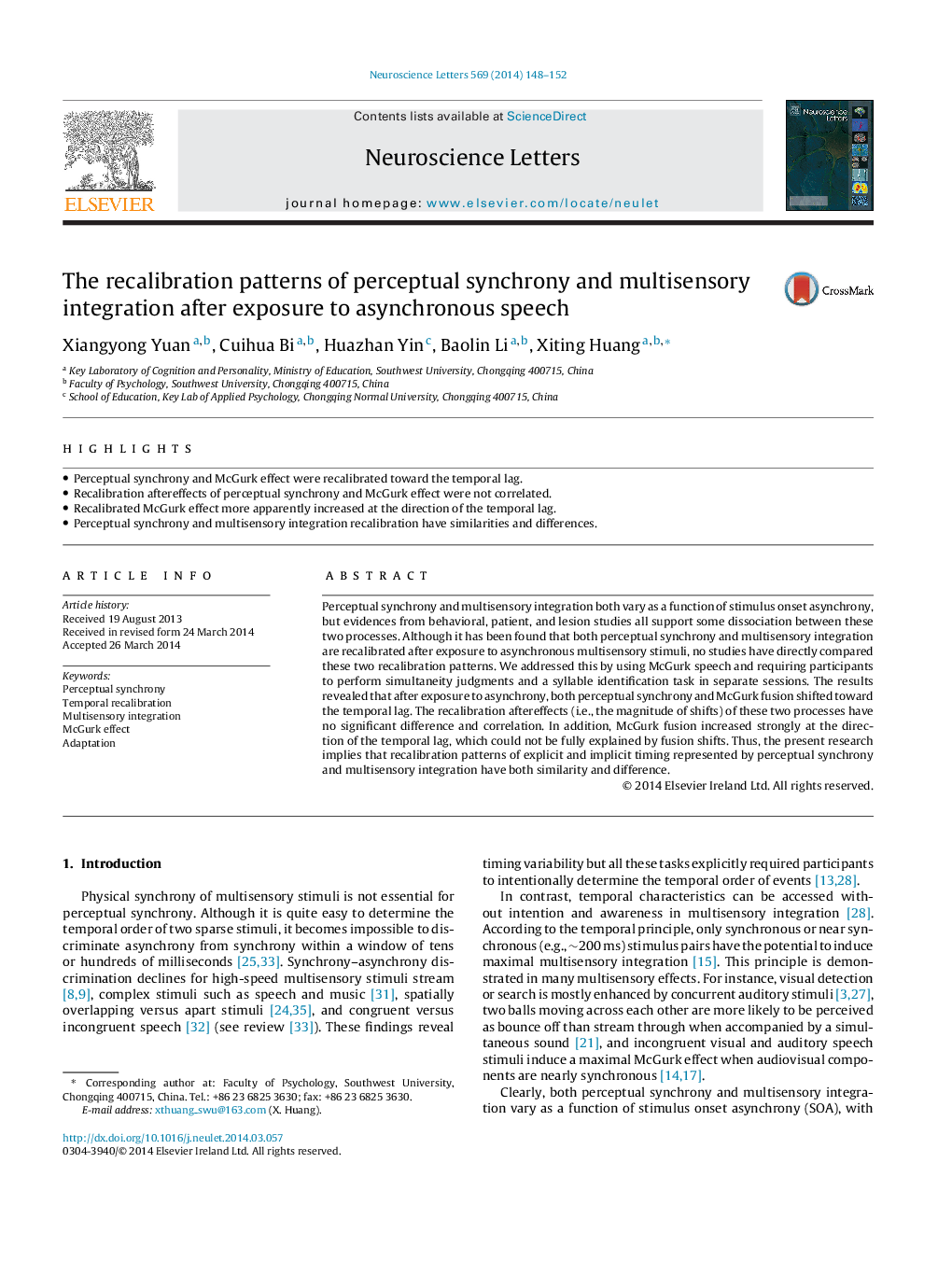| Article ID | Journal | Published Year | Pages | File Type |
|---|---|---|---|---|
| 6282033 | Neuroscience Letters | 2014 | 5 Pages |
Abstract
Perceptual synchrony and multisensory integration both vary as a function of stimulus onset asynchrony, but evidences from behavioral, patient, and lesion studies all support some dissociation between these two processes. Although it has been found that both perceptual synchrony and multisensory integration are recalibrated after exposure to asynchronous multisensory stimuli, no studies have directly compared these two recalibration patterns. We addressed this by using McGurk speech and requiring participants to perform simultaneity judgments and a syllable identification task in separate sessions. The results revealed that after exposure to asynchrony, both perceptual synchrony and McGurk fusion shifted toward the temporal lag. The recalibration aftereffects (i.e., the magnitude of shifts) of these two processes have no significant difference and correlation. In addition, McGurk fusion increased strongly at the direction of the temporal lag, which could not be fully explained by fusion shifts. Thus, the present research implies that recalibration patterns of explicit and implicit timing represented by perceptual synchrony and multisensory integration have both similarity and difference.
Related Topics
Life Sciences
Neuroscience
Neuroscience (General)
Authors
Xiangyong Yuan, Cuihua Bi, Huazhan Yin, Baolin Li, Xiting Huang,
